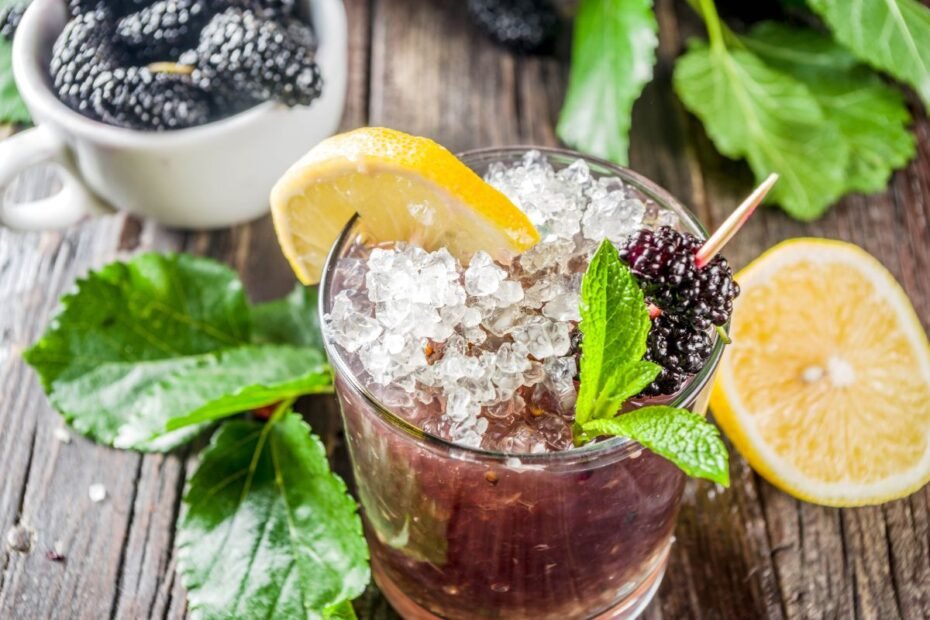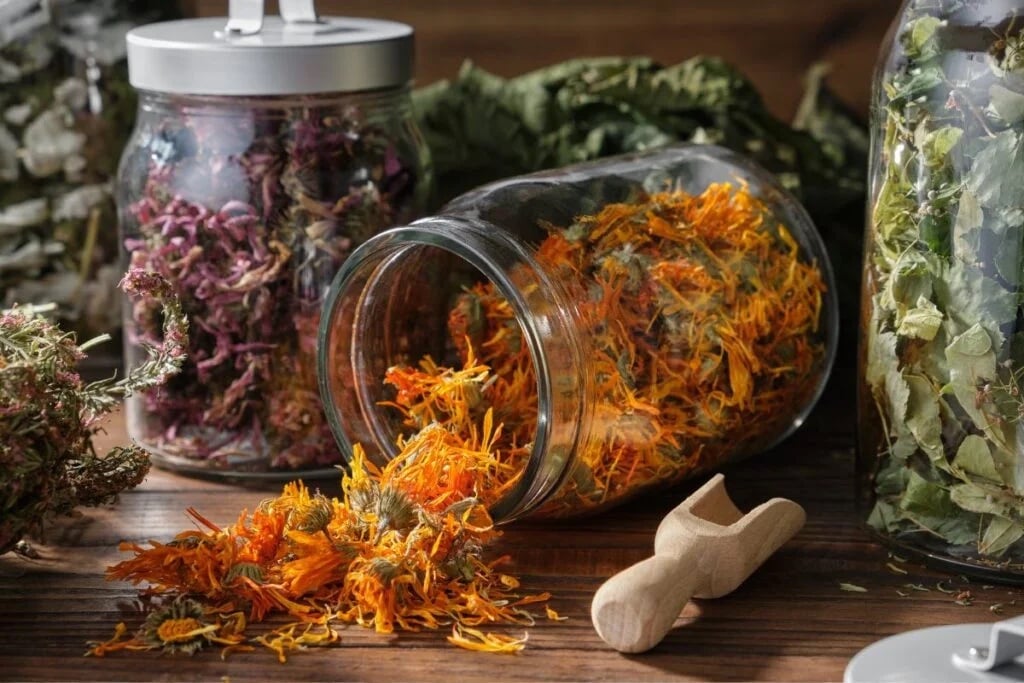Mulberry is the plant that feeds the silkworms that spin cocoons of silk thread. These insects feed only on mulberry leaves, so there would be no silk without mulberry trees. But the mulberry tree is not only valuable to humankind for its ability to produce worthwhile fabrics. The tree produces delicious and vitamin-rich berries. Its leaves are rich in beneficial substances and have a wide range of applications in everyday nutrition. The leaves of this plant are used to make healthy mulberry tea, which is particularly favorable for diabetes treatment and other mulberry tea benefits.
Mulberry: Growing Locations
Mulberry (genus Morus) is a tree native to the temperate regions of Asia and North America. About 10 species of mulberry are known. The following mulberry trees are the most popular: white, red, and black. It’s easy to identify the species, because of the color of the fruit.
The mulberry tree grows up to 15 meters tall. Its leaves are different, even when growing on the same tree. Some are oval, resembling linden leaves, while others are curled, like grapes. They both have toothed margins. The tree flowers in late spring to late May. The fruit ripens in September and August.
Mulberry fruits are berries that visually resemble raspberries or blackberries, except they are larger. White berries are sweet, while red and black berries are sweet and sour.
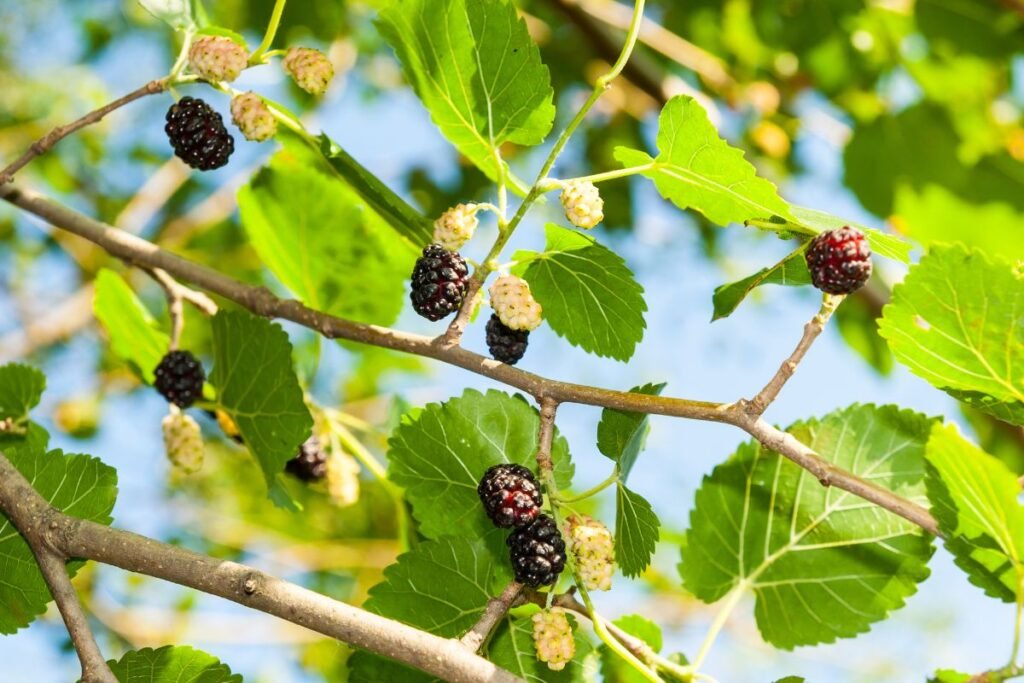
Some Ways to Harvest Mulberry Leaves
Research shows that their healing effects depend on the time of year when people harvest mulberry leaves.
General recommendations for harvesting mulberry leaves:
- The best time to collect mulberry leaves is in the spring or early summer when the leaves are young.
- If you intend to use this tea to control diabetes, pick the leaves in June.
- Do not pick old, damaged leaves.
- Pick a maximum of one-third of the leaves from a single branch or tree.
Store the freshness of the plucked mulberry leaves in an airtight container in the fridge. Fresh mulberry leaves can last up to several months if the container is vacuumed tightly.
Once picked, you can dry mulberry leaves. Spread them in a single layer on a clean, dry surface such as a baking tray or grill, and place them in a well-ventilated area away from direct sunlight. Gently turn the leaves over every few days to ensure even drying. This will help to prevent mold or mildew in the raw material.
Place fully dry and brittle mulberry leaves in an airtight, sealed container. If possible, place the leaves whole and whole. Crush them only before making the tea. Store dried mulberry leaves in a dark and cool place.
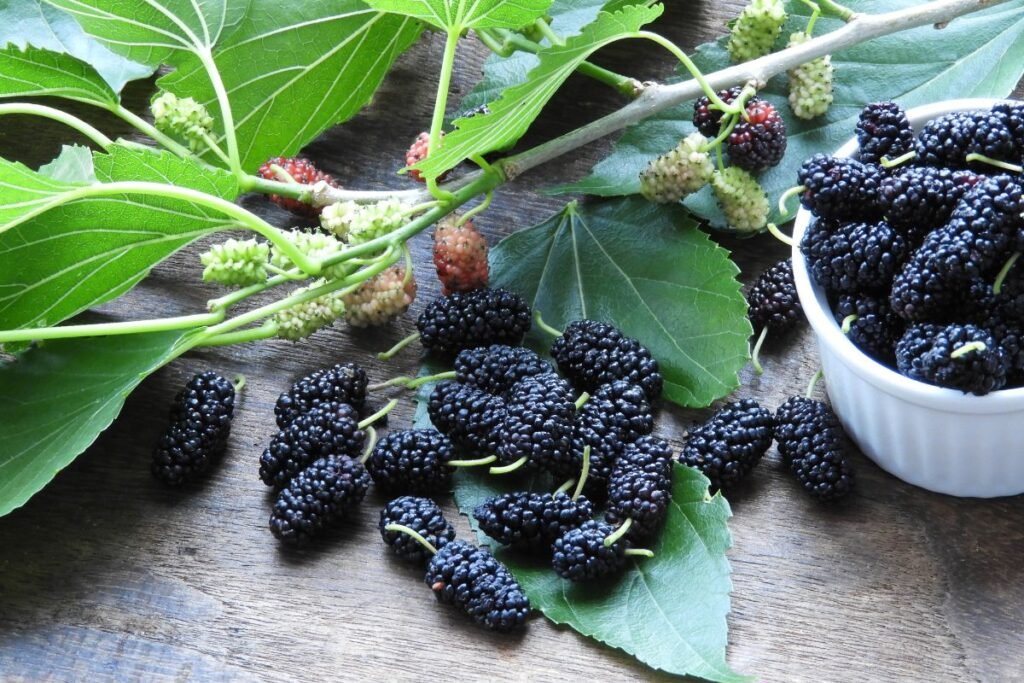
Mulberry Tea Benefits
Traditional Chinese medicine used mulberry leaves for medicinal purposes for centuries. They were first used to treat fevers and digestive problems.
Mulberry leaves contain many plant compounds with anti-inflammatory properties. It is also rich in vitamin C and minerals such as zinc, phosphorus, iron, calcium, potassium, and magnesium. Mulberry leaves are rich in polyphenols—antioxidants that can help protect the body against free radical damage.
Scientific studies confirmed many of the healing properties of mulberry leaves:
- This tea helps diabetic patients regulate their blood sugar levels.
- It is low in calories and caffeine-free, making it a good choice for those watching their weight or trying to reduce their caffeine intake.
- It promotes intestinal bacteria growth, which helps to maintain healthy gut function.
- Mulberry leaf extract is more effective than vitamin C in removing free radicals. Therefore, mulberry leaf tea can be an effective tool to reduce the risk of chronic diseases.
- Mulberry tea can be effective in lowering blood cholesterol.
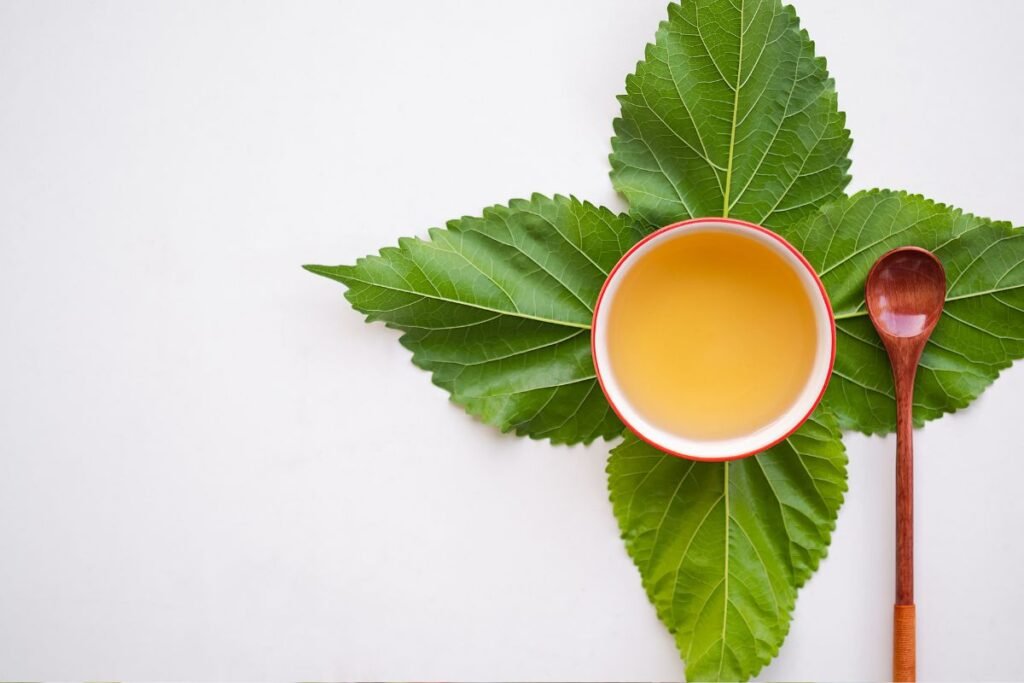
Mulberry Tea from Leaves: Easy to Prepare
All you need to make mulberry leaf tea is mulberry leaves and hot water. You can use both fresh and dried mulberry leaves to make the tea. The taste, aroma, and color of mulberry leaf tea are reminiscent of fresh green tea.
For 2 cups of tea, you will need:
- 2-3 tablespoons chopped fresh or 2-3 teaspoons dried mulberry leaves,
- 2 cups of filtered water.
Place the mulberry leaves in a tea-making bowl and cover with boiling and slightly cooled water. Cover the container and leave it to steep for 10–15 minutes. Strain the tea before serving.
Mulberry Leaf Tea Variations
If you want to enjoy a more varied flavor of mulberry leaf tea or to enhance the healing powers of the tea, you can do so by exploring different combinations of the tea ingredients. Here are some ideas:
- Mint and mulberry leaf tea is refreshing with a pleasant, soothing aroma. Add a few mint leaves to the tea brewing vessel with the mulberry leaves, and brew the tea.
- Mulberry leaf and lemon tea have a pleasant citrus aftertaste and a double dose of vitamin C. Squeeze the juice of half a lemon into a cup of strained tea before drinking.
- Ginger and mulberry leaves are spicy and warming, especially effective for colds. Place a few slices of fresh ginger in the tea bowl with the mulberry leaves, and brew the tea.
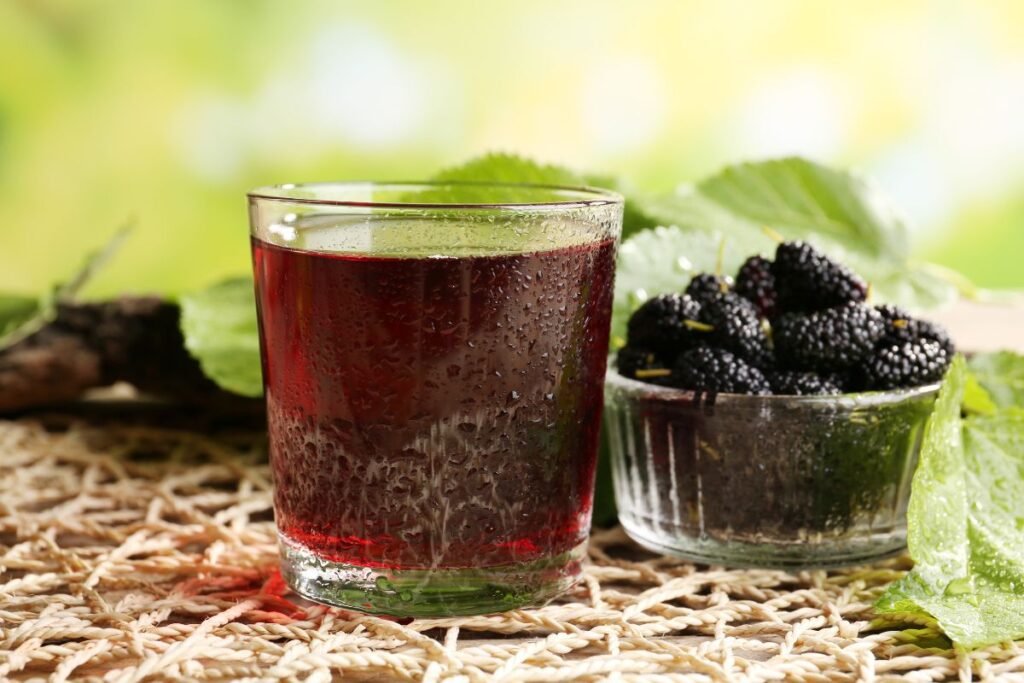
Mulberry Tea from Berries. Why Not?
Mulberries are usually consumed fresh or canned. However, mulberries are very nutritious and delicious. You can make it into a tasty and refreshing drink. You can enjoy a sweet and warm mulberry tea on a muggy day or a cold and refreshing berry drink in the summer. Here are some ideas:
- Use mulberry jam to make the drink. Put it straight into a cup or jug and drink it warm or cold.
- Use fresh, mashed berries for the drink. Add them to a saucepan, cover with water, and boil for a while. Drink it warm or chilled.
- Use frozen berries for the drink. Prepare and consume the tea in the same way as fresh berries.
Iced Mulberry Tea
This iced tea with mulberries and ice will help you refresh on a hot summer day.
Ingredients:
- 3–4 teaspoons of raw green tea,
- 1 cup of fresh mulberries (if you don’t have these berries, you can substitute the same amount of blackberries or blueberries),
- 4 cups of water,
- a few mint leaves,
- a few slices of fresh lemon or lime (optional),
- ice cubes.
Tea preparation:
- Crush the berries (e.g., in a food processor) and pass through a sieve. Strain the berries through a sieve and sieve them into a colander.
- Place the green tea in a teapot. Fill it with 90 °C boiled water. Add the mint leaves to the tea and squeeze in the juice of a lemon or lime, if desired. Leave the tea to steep for about 10 minutes, then pour the berry juice and stir well.
- Add ice cubes to the glasses and pour the prepared tea through a strainer (or strain it before pouring it into the glasses).
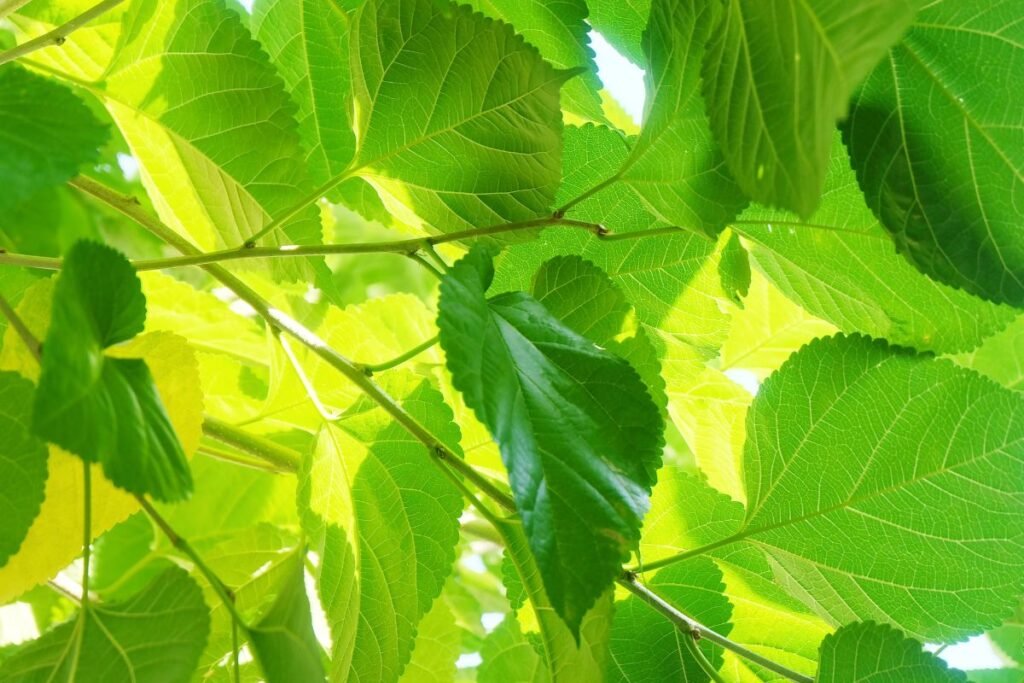
Mulberry Leaves for Cooking
Due to its rich nutritional composition, which is beneficial for the health of the body, mulberry leaves are used in a wide range of dishes and as a condiment.
The uses of mulberry leaves in the kitchen are many and varied. Use only young leaves for food. Damaged leaves that have begun to change color to yellow are not suitable.
Surprise yourself and others by adding dishes with mulberry leaves to your menu:
- Add them to fresh salads. They have nutritional qualities superior to spinach!
- Add them to vegetable stews.
- Add them to meat, cottage cheese, or other products and stew them.
- Grind dried mulberry leaves and use the powder as a versatile spice. Add to baked goods, yogurt, porridge, etc.
A Healthy Cocktail with Mulberry Leaves
This smoothie is the ultimate breakfast. But it will also give you a day boost or a light and healthy dinner. To prepare it, you will need:
- 500 ml of water,
- 1 apple,
- 1 banana,
- 6 mulberry leaves (fresh or dried),
- lemon juice (to taste),
- 1 teaspoon of chia seeds.
Place all the ingredients in a food processor and puree until smooth. Enjoy!
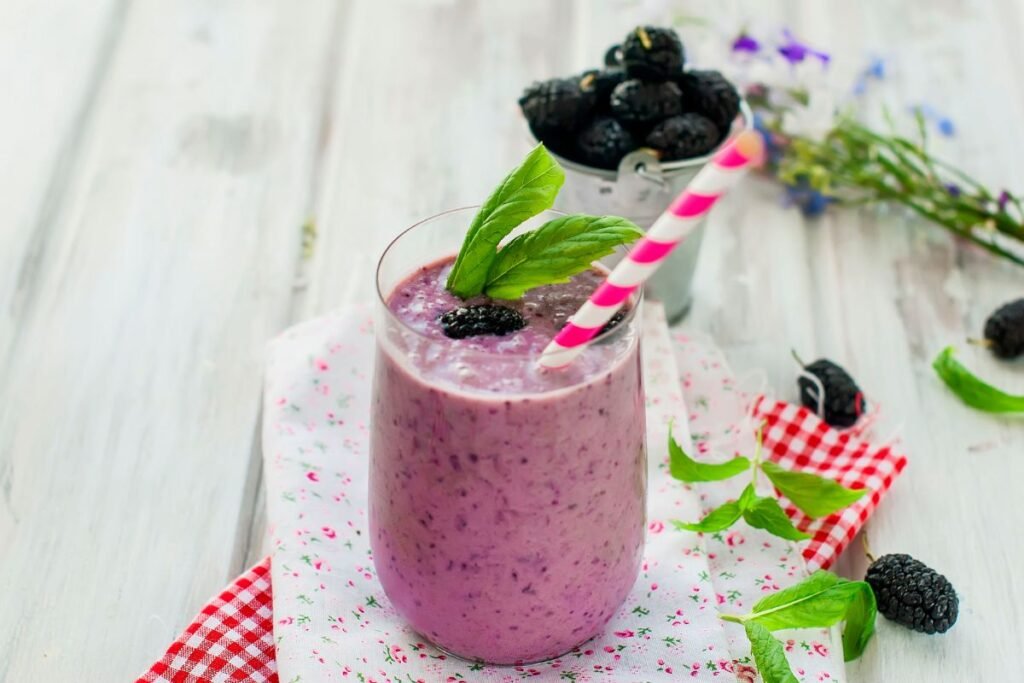
Mulberry Leaf Decoction for Skin Health and Beauty
Mulberry leaf tea has antioxidant and skin-brightening properties. The external use of this tea can help with skin problems. Mulberry leaf decoction can be used as a tonic for cleansing and brightening the skin.
Make a decoction of 1 tablespoon of dried mulberry leaves and 500 ml of water. Place the leaves in a saucepan, cover with water, and bring to a boil. Turn off the heat and leave the decoction in a covered pot for 30 minutes. Strain the decoction and let it cool completely. Moisten gauze or a cotton ball with the prepared remedy and cleanse the wounded acne face or eczema-affected skin.
Side Effects of Mulberry Tea
Mulberry tea is generally considered safe to drink. Side effects may occur rarely. These may include digestive problems such as diarrhea, nausea, and vomiting. If you experience unwanted symptoms, stop taking mulberry tea and consult your doctor.
There is conflicting information on the use of mulberry leaf tea during pregnancy and lactation. Some sources claim this tea is safe for both mother and fetus, while others say there is insufficient reliable data on this issue.
During pregnancy and lactation, it is best to consult a healthcare professional before using any herbal tea.
Sources:
https://www.tea-and-coffee.com/blog/mulberry-tea-benefits
https://www.healthline.com/nutrition/mulberry-leaf#precautions
https://pubmed.ncbi.nlm.nih.gov/28878804/
https://www.ncbi.nlm.nih.gov/pmc/articles/PMC6130672/
https://www.ncbi.nlm.nih.gov/pmc/articles/PMC5321430/
https://pubmed.ncbi.nlm.nih.gov/29530616/
Associative photos from © Canva.
